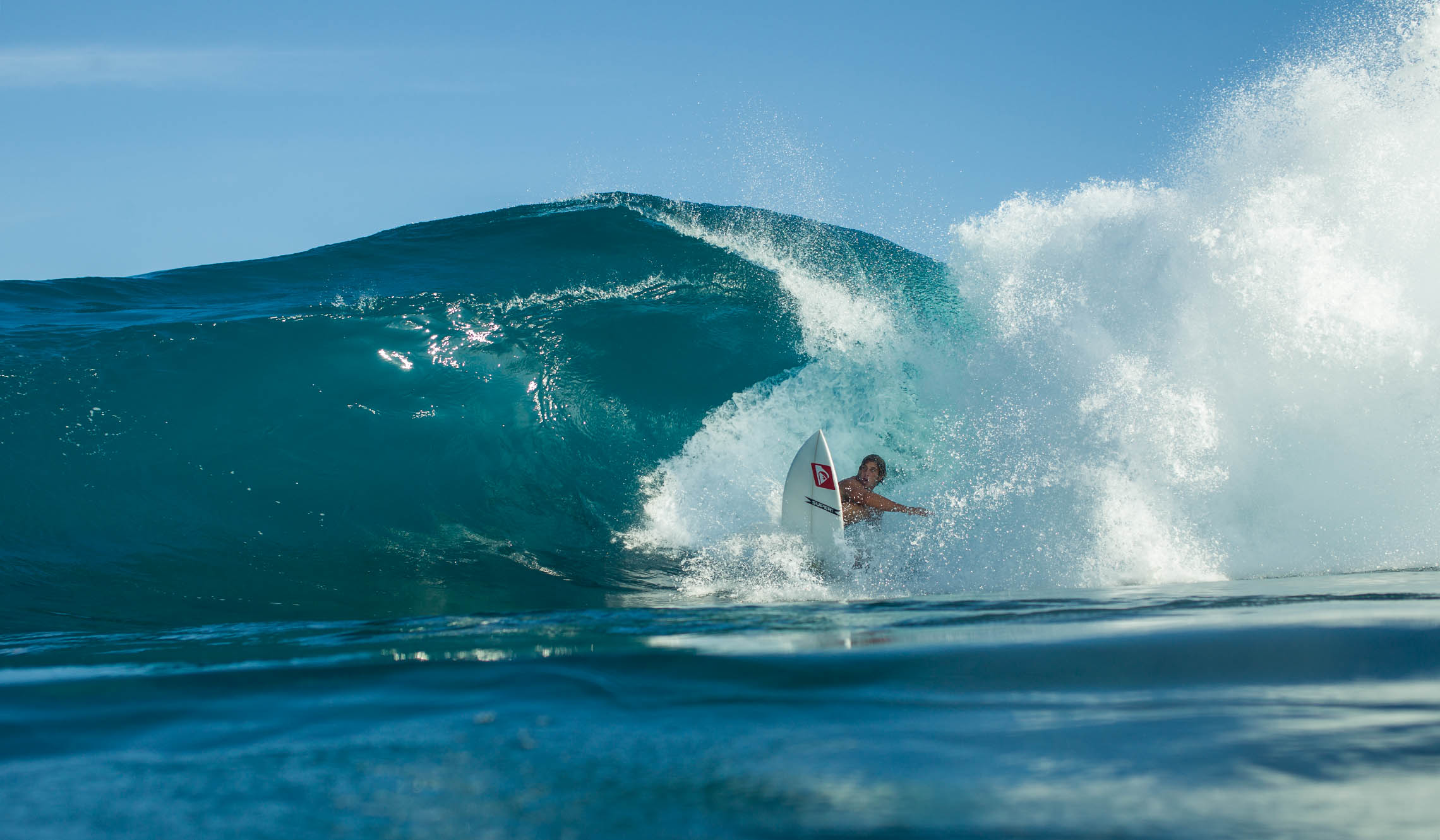Many millions of homo sapien have surfed throughout history but most did so against their will. Shipwrecked or misjudging a beaching on some primitive craft, they were swept ashore by the breakers, their terrified white fingers clutching jetsam or gunwale. There was no control—no thought that the force carting them toward rock and reef was anything other than a mysterious, implacable sea-god raging at their trespass.
There was no performance in the surf. There could be no “brown Mercury” described in Jack London’s 1907 Hawaiian surfing account of a waverider “not struggling frantically in that wild movement, not buried and crushed and buffeted by those mighty monsters, but standing above them all, calm and superb, poised on the giddy summit.” No, the summit would have been many things to those poor souls in its clutches, but not “giddy.” Upon reaching the shore, no one paddled back out.
And that’s where surfing—and the beginnings of performance on a surfboard—begins. When some unwitting surfrider would have said, “Hey, that was fun!” and returned for another wave. It would have been quite a revolution in the annals of seagoing. Through the ages, mankind had put to sea “to go,” as Kipling wrote, “with the old grey widow maker.” But until Surfer Zero went back out for another one, it was always for commerce or conquest—never sport.
Of course, surfing’s first “brown Mercury” would have been a seal or a dolphin. Just as mankind would not have considered, without the example of birds, moving through the air in machines, so too would the surf have remained a malevolent kraken-lair, had not seals and dolphins demonstrated that the waves could be benign conveyances, playgrounds even.
Through the ages, mankind had put to sea “to go,” as Kipling wrote, “with the old grey widow maker.” But until Surfer Zero went back out for another one, it was always for commerce or conquest—never sport.
Before men took to the air, the sea was the only fluid medium through which they could move. There, in the water, the natural world offered mostly round shapes—fish, seals, dolphins. And the materials—trees, reeds—offered little else. So the influences of these materials and surf-riding models found in the animal kingdom meant that, for a very long time, canoes and proto-surfcraft were governed by these limitations.
Like the first successful heavier-than-air aircraft demonstrated by the Wright Brothers, early surfboards were ridden prone. They were hard to control, couldn’t turn, and had a habit of nose-diving into the sand. On the crude, short, surfboards that would eventually be recognizable as paipo or alaia in Hawaii, the rider caught a wave (somehow) and coasted straight off shoreward, mostly in the whitewater. Who knows how long this sort of surfing went on in the South Pacific and elsewhere—thousands of years?
Think about it: surfing, which harnesses fractal subsets of the very energies that power the universe, upon the same oscillations emitted by curling storms and galaxies alike, was a sport that squandered its most potent driver—gravity—for ages. All those eons in which catching the wave and hanging on and riding straight off were performance, all the while waiting for the sport’s greatest all-time innovation to come along—angling, or lala in Hawaiian. Who can say when riding sideways on an unbroken wave face began…
Read More Subscribe









